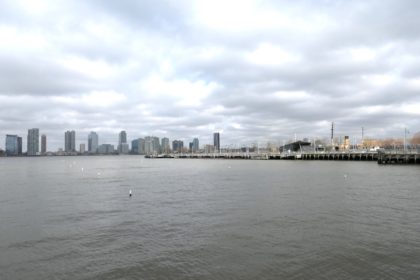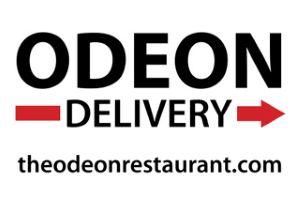Categories
Left column house ads
In the News: Bonkers Plan to Woo Amazon
January 24, 2018 Community News, Crime, Restaurant/Bar News
••• The New Yorker reviews Ruchi, the Indian restaurant on Greenwich below the World Trade Center, calling it “a humble dive [that] goes for a maximalist approach, offering more than sixty main courses, an attempt at encyclopedic deliciousness from across the subcontinent.”
••• And the New Yorker also has one of those weird non-review vignettes about Fraunces Tavern. The ending makes absolutely no sense to me.
••• A phone snatching on N. Moore is among the highlights of the Tribeca Trib police blotter. Plus this: “A woman tried to use a credit card to buy a sweater, skirt and jacket totaling $4,954 [at Saks Fifth Avenue in Brookfield Place]. The thief, a 31-year-old Queens resident, was stopped by a police officer who called the New Jersey woman whose name was on the card and discovered that the purchase was being made without her consent. A fake driver’s license with the New Jersey’s woman name as well as other fraudulent state IDs and credit cards were also found on the suspect.” One wonders why the police decided to proactively doublecheck the customer’s identity.
••• Charles Urstadt, former chairman of the Battery Park City Authority, thinks that the city should fill in the Hudson River along the Tribeca waterfront so that Amazon can build a headquarters there. He seems to think Tribeca would be better off if it resembled Battery Park City. —Broadsheet
1 Comment
Comment:
Subscribe
Subscribe to the TC Newsletter












I am shocked (SHOCKED!) that Charles Urstadt says he wants to fill in more of the Hudson River. He’s dined out on that old, never-gonna-happen idea for decades.
Downtown Express, March 2010:
“But another of Urstadt’s proposals — to extend the landfill up from Chambers St. to Canal St. — came much closer to happening than many people realize.
“’I, in fact, recommended that,’ said [Sandy] Frucher, the president of the B.P.C. Authority from 1984 to 1988.
“Frucher saw Lower Manhattan’s fledgling residential community and realized that the neighborhood needed more large park spaces. Frucher would have split the 200 new acres north of Battery Park City evenly between parks and residential development. He saw full-size fields for Stuyvesant High School, and enough new residents to build real community services for the surrounding neighborhood.
“Frucher still describes the idea with enthusiasm and said he agrees with Urstadt that it could work today. Back in the ’80s, the proposal got tied up in the environmental debate over Westway, which was never implemented. Another obstacle today is the fact that the Hudson River Park Trust is rebuilding Piers 25 and 26, stretching out into the water right where Urstadt and Frucher see apartments and playing fields.
“’There’s no point rebuilding piers no ships are ever going to use,’” Urstadt said when reminded of the Hudson River Park project. ‘What’s the point of a long skinny finger sticking out in the river, when you could put something where kids can play soccer or softball?’”
NY Times, March 2009:
“OP-ED CONTRIBUTOR
The Bigger Apple
By CHARLES J. URSTADT […]
“Develop 50 more acres of landfill in the Hudson River on the West Side, north of Battery Park City. The cost of the landfill, as well as of the public park and recreational spaces that would be part of the new area, could be reimbursed from ground rents and Pilot payments collected from private developers. I have been advocating this additional landfill project for some time and have been faced with the bogus argument that it would kill the fish.
“But fish actually prefer the nooks and crannies of the rock formations surrounding Battery Park City’s north marina to the murky silt that was under the rotting piers that we removed to develop the area. The building of a new bulkhead would use large rocks to shore up the concrete wall and between these rocks fish could lay eggs. (And to my knowledge, not a single fish was killed as we filled the original 92 acres of Battery Park City.)”
NY Times, October 2007:
“Developers have long argued that you cannot go wrong buying waterfront land because no more is being created. But Charles J. Urstadt’s dream is to extend Lower Manhattan a little bit farther into the Hudson River.
“Having overseen the creation of the landfill in the 1960s that became Battery Park City, Mr. Urstadt believes it can be done again. And he refuses to drop the idea, no matter how far-fetched others may find it.
“Mr. Urstadt, who was the first chairman of the Battery Park City Authority after it was created in 1968 and is now its vice chairman, has for years been advocating the potential benefits of adding 40 or 50 acres to Lower Manhattan. As a champion of filling in more of the river, he has stood nearly alone and attracted scant notice.
[…]
“Richard N. Gottfried, an assemblyman from Manhattan who sponsored the Hudson River Park Act, called Mr. Urstadt’s idea ‘outrageous.’ He said that law prohibited using landfill in the river between Battery Park City and 59th Street.
“’This idea keeps rising from its coffin,’ Mr. Gottfried said.
[…]
“[Urstadt] served as chairman of the state authority that was created to develop and run Battery Park City from late 1968 until 1978. Gov. George E. Pataki then reappointed him to the authority’s board in 1998, a perch he has used as a platform for his campaign for more landfill.
[…]
“A few weeks ago, however, when he was on his way to meet with Mr. Whelan at City Hall, Mr. Urstadt spotted a formidable obstacle. The Hudson River Park Trust had begun rebuilding Piers 25 and 26, which extend into the Hudson just north of Battery Park City.
“Mr. Urstadt said he immediately recognized that this development posed a problem for his plan, but not an insurmountable one. The simple solution, he said, would be to shift the site of the landfill several blocks to the north.
“So, on the fly, he decided the landfill would have to be between the rebuilt piers and Pier 40, near Houston Street. It would cross over the Holland Tunnel tubes, but Mr. Urstadt did not flinch because Battery Park City sits atop the tubes of the PATH train.”
NY Post, August 2007:
“BATTERY PARK CITY: GREEN CASH COW
By Charles J. Urstadt […]
“NEW York City will soon have more parks than it can afford, but there’s a clear way to finance them – expand Battery Park City.
“The independent Regional Plan Association recently reported that the upkeep cost of the new waterfront parkland now in the works throughout the city will be $100 million a year. (These parks will be high-maintenance, thanks to corrosion and other upkeep issues.) The city now spends $350 million a year to operate all of its parks, so that means a 28 percent rise in park costs.
“The Hudson River Park, the narrow recreational strip running from the Battery all the way up to Midtown along West Street, is emblematic. The cost of building it (that, too, is higher for waterfront parks) is already starting to cast a cloud over the project. As maintenance costs add to the tab in the coming years, keeping this oasis from becoming an eyesore will require a lot more cash.
“Yet, if you stand in this park, you can literally see a solution – a way not only to pay for the Hudson River facility, but also to help fund the upkeep of all New York City parks for years to come.
“Look south: It’s Battery Park City.
“AS Holmes never tired of telling Dr. Watson, it’s elementary: Extend Battery Park City 2,000 feet north – from its present edge at Chambers Street to Canal Street. This would add 50 acres for parks, housing and other uses to the already 100-acre mixed-use project.”
The Slatin Report, October 2005:
“[…] Floating the idea in a speech at a dinner in his honor – and on his 77th birthday – held by the Steven L. Newman Institute, Urstadt then called on the city and state to extend the existing Battery Park City another 2,000 feet to the north. Urstadt put the cost of such an exercise at $300 million, barely denting the profits from the net lease of the original property. […]”